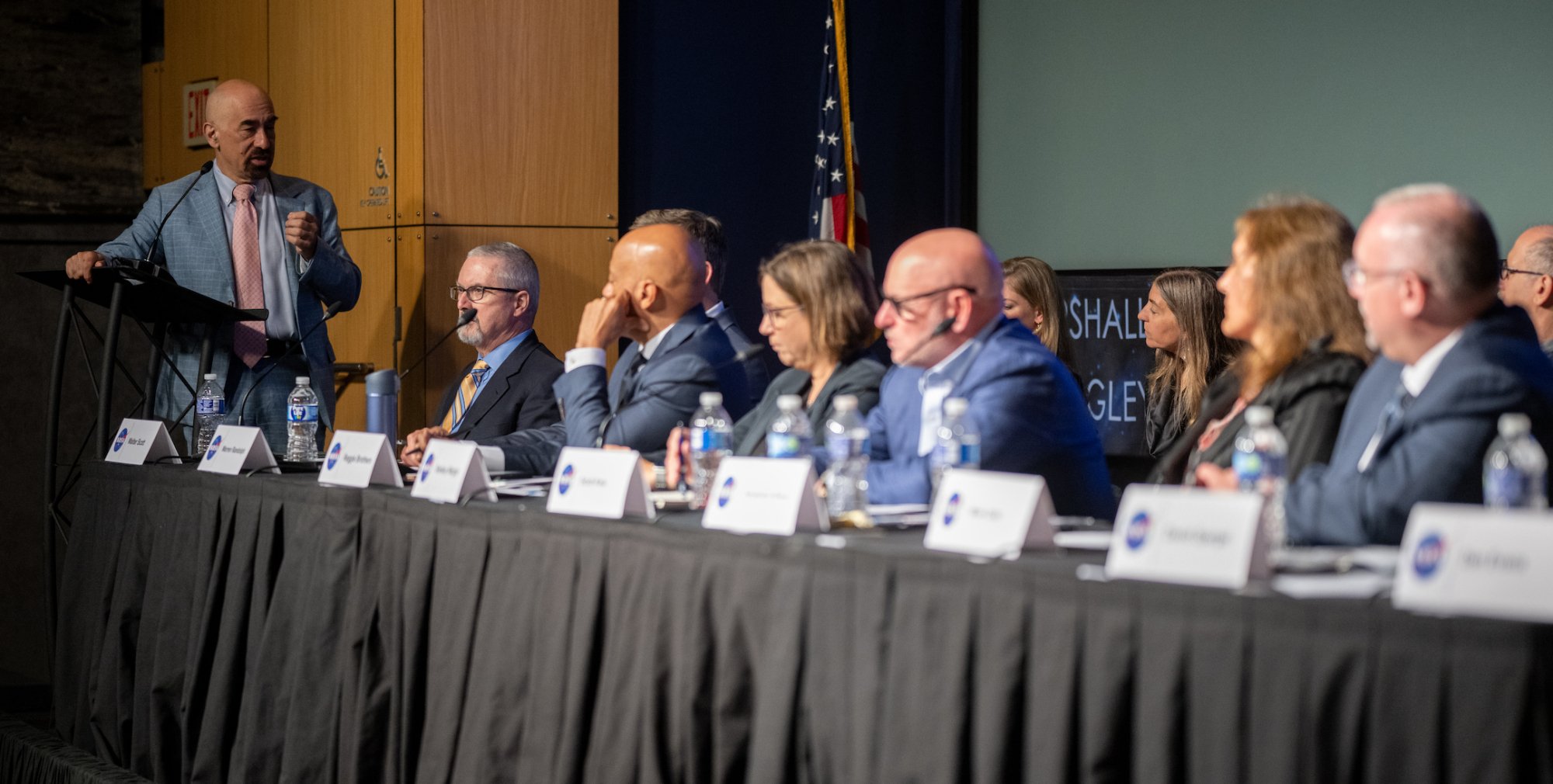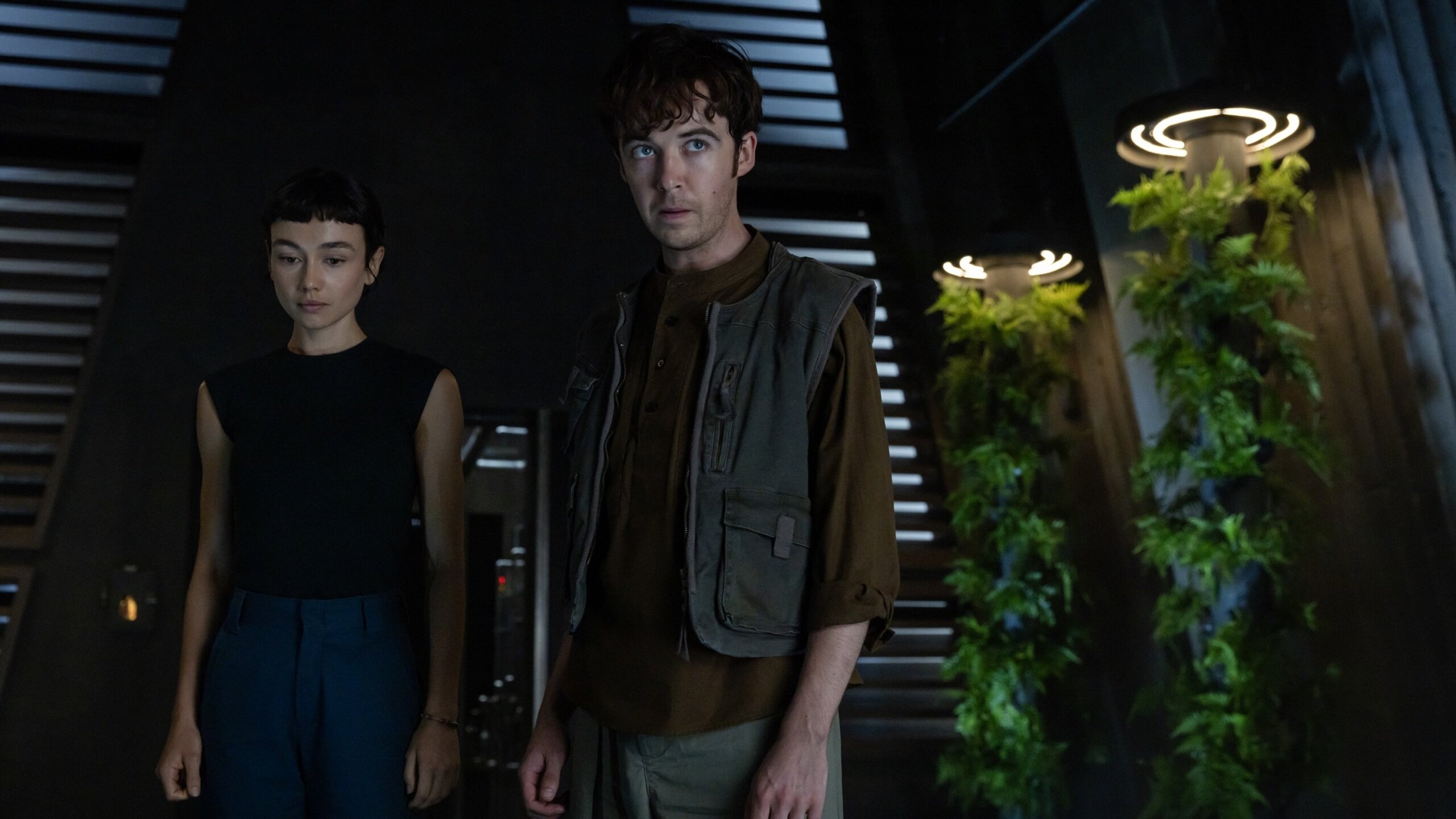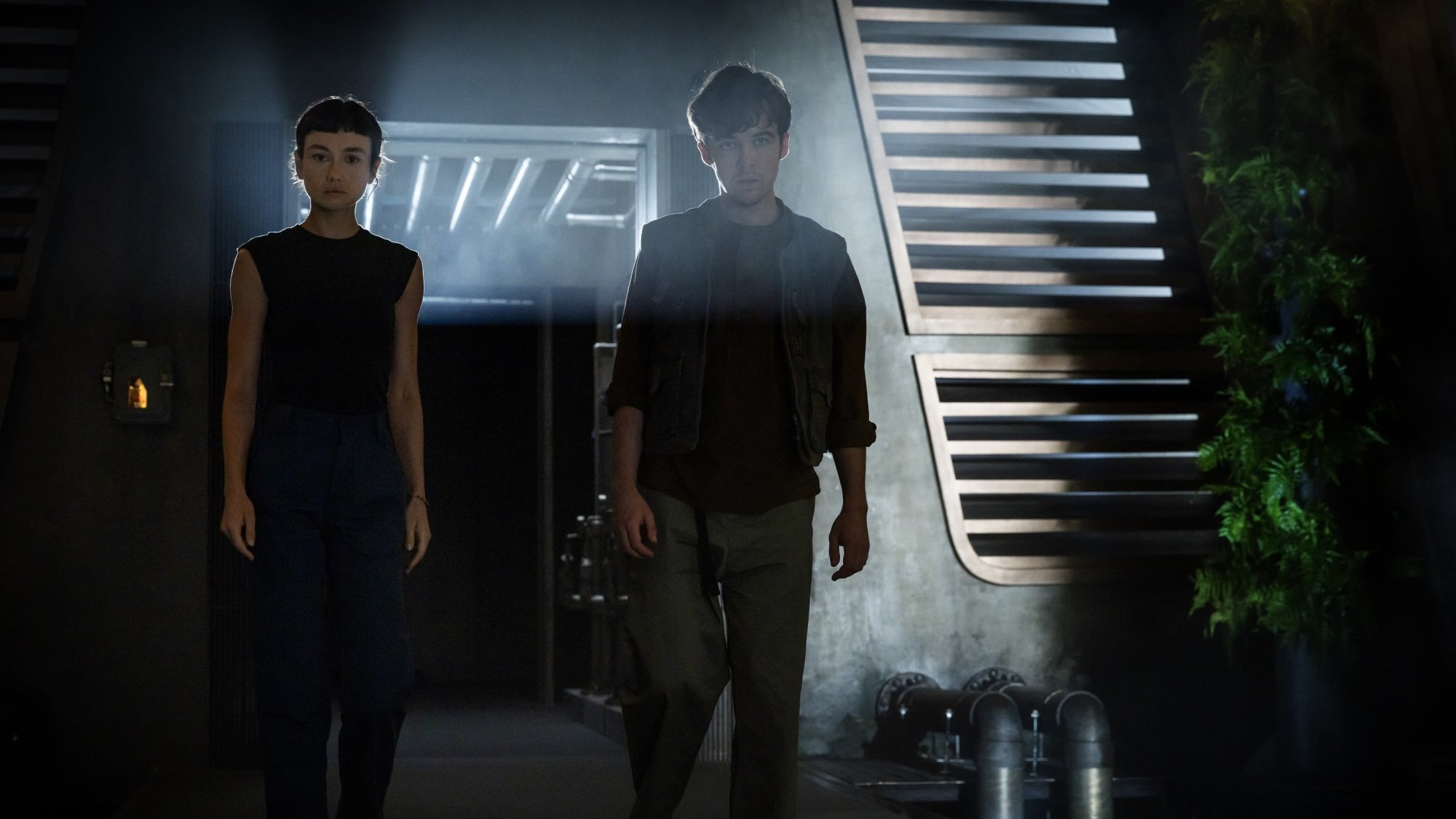Tech
Some UFOs may be hidden from our national leaders

An unassuming loophole might be giving the U.S. government and its private contractors free rein to withhold evidence of unidentified craft traveling well above our skies — in outer space.
That's the argument made by former Capitol Hill policy advisor and attorney Dillon Guthrie, published this January in the Harvard National Security Journal, a publication run by Harvard Law School. Guthrie spent three years as a legislative assistant to Senator John Kerry covering national security issues and later worked directly for the Senate Foreign Relations Committee. He describes this UFO loophole as a kind of "definitional gap."
"Congress has redefined what were formerly called 'unidentified flying objects' [UFOs] to first 'unidentified aerial phenomena' [UAP in 2021], and then the following year to 'unidentified anomalous phenomena' [also UAP]," Guthrie told Mashable.
As Americans have been learning a lot lately in the age of Elon Musk's DOGE, the devil is in the details when it comes to the nation's large and complex federal bureaucracies. And an antiquated, mid-century sci-fi concept like "unidentified flying objects" packed a lot of assumptions into one short acronym. That's a reality lawmakers determined would hinder good faith efforts to seriously investigate more credible cases of UAP reported by U.S. military personnel in recent years.
Did the Navy pilots who witnessed the now notorious 2015 "GoFast" UFO, for example, really see something that was aerodynamically "flying"? Or was it just floating, like a balloon? Was it or any other strange airborne sighting truly a hard physical "object"? Or were these cases all something more amorphous and temporary, like the plasmified air of ball lightning?
As a term, UAP has offered a more broad and empirically conservative bucket for some of these still as-yet-unexplained events, categorizing them in a way that is not just more palatable to scientists and government officials; it has also made it harder for secretive U.S. defense and intelligence agencies to dodge the new annual reporting requirements now mandated by Congress, as part of the National Defense Authorization Act (NDAA). Or, that's the idea, in theory.
A careful study of the NDAA's most recent definition for UAP, as Guthrie noted in his new article, indicates that "data of any unidentified, spaceborne-only objects may be exempt."
"Under that current statutory definition, there are three kinds of unidentified anomalous phenomena," Guthrie told Mashable. "The first are airborne objects, or phenomena, that are not immediately identifiable. The second are submerged objects [or phenomena] that are not immediately identifiable — so, these would be unidentified objects in the 'sea domain,' or underwater."
"And then there's this third category of UAP, which are 'transmedium objects,'" he continued, "those that are observed to transition between, on the one hand, space and the atmosphere, and, on the other hand, between the atmosphere and bodies of water."
"Just under that strict reading of the definition," Guthrie said, "there is no spaceborne-only UAP."

Credit: NASA / Joel Kowsky
Any U.S. intelligence agency or branch of the military, in other words, that tracked a spacecraft circling (but respecting) Earth's border would be free to legally withhold that incredible hard data from Congress. And dozens of very recent cases like this may very well exist: Last November, the Defense Department's official UAP investigators with its All-domain Anomaly Resolution Office (AARO) disclosed that no less than 49 of last year's 757 cases in their annual unclassified report involved strange sightings of UAP in outer space.
AARO's 2024 report emphasized, however, that "none of the space domain reports originated from space-based sensors or assets; rather, all of these reports originated from military or commercial pilots or ground observers." But, Chris Mellon — formerly a minority staff director for the Senate Intelligence Committee and a deputy assistant secretary of Defense for Intelligence under Presidents Bill Clinton and George W. Bush — believes that this lack of sensor data is likely "a failure of reporting."
"Why is it that none of America's unparalleled space surveillance systems captured and reported what these pilots observed?" Mellon asked in an essay for the technology news website The Debrief this month.
"Did these systems actually fail to capture any data, or is this another case," the former Pentagon official continued, "in which the information is simply not being shared with AARO or Congress? If the pilots and ground observers were mistaken, cross referencing with these systems could help confirm that as well."

Credit: U.S. Space Force
Mellon, a longtime advocate for transparency on UAP, recounted his own past government service experience supervising one of these systems, the Ground-based Electro-Optical Deep Space Surveillance (GEODSS) stations now managed by the U.S. Space Force. First established in the 1980s to effectively spy on spy satellites and other foreign orbital platforms, GEODSS can track objects as small as a basketball sailing 20,000 miles or more above Earth's surface.
"Many years ago, I asked a colleague visiting the Maui GEODSS site to inquire if the system had recorded anything 'unusual' in the night skies lately," Mellon recalled. "Sure enough, just a month or so earlier, the system recorded what appeared to be 4-5 bright objects traveling parallel to the horizon."
GEODSS personnel reportedly were baffled. These gleaming objects appeared to be at once too slow and consistent in their trajectory to be meteors but too fast, hot and high up in space to be any known aircraft.
"Site personnel had no idea what the objects were and, in those days, had no incentive to acknowledge or report the data," according to Mellon. "That incident occurred in the 1990s, when the GEODSS system was far less capable than it is today."
And, as Guthrie told Mashable, the full suite of America's space monitoring, missile defense and early warning platforms could easily be recording critical, perhaps world-changing evidence about UAP — which could reveal if it's another nation's advanced spacecraft, something mundane, or something truly unknown. Data from these systems — including the Space Fence, NORAD's Solid-State Phased Array Radars (SSPAR), the Space-Based Infrared Monitoring System (SBIRS), and others — could also be kept under wraps based on just this one technicality.
"If there are no requirements to report on spaceborne-only UAP," Guthrie said, "then there are no requirements by elements of the defense and intelligence communities to report on those objects using these especially sensitive space collection sensors."
"Our ballistic missile defense people were very concerned."
The now well-known 2004 USS Nimitz "Tic Tac" UFO incident, made famous by The New York Times in 2017 and testified to under oath in Congress, included the monitoring of similar objects in space, according to veteran Navy radar operator Kevin Day. Then a senior chief petty officer supervising radar efforts onboard the USS Princeton, a guided-missile cruiser with the Nimitz carrier strike group, Day told Mashable that crew tasked with looking out for ICBM warheads saw these unexplained tracks moving up at 80,000 feet.
"Our ballistic missile defense people were very concerned," Day told Mashable.
Greater engagement with these kinds of potential UAP risks does not appear to be on the way from some of the United States’ best unclassified collection tools — the worldwide network of astronomical observatories and satellites managed by NASA. Despite much fanfare around NASA’s announcement of a dedicated director of UAP research in 2023, the position has been left quietly vacant since September 2024, according to a recent statement from the space agency’s press office.
Guthrie chalks the crux of this problem up to "an absence of overarching political oversight."
"There have been so many agencies that have been alleged to have been or currently be involved in the UAP matter," he explained. "It's all too easy for any of these agencies to pass the buck."
Guthrie hopes lawmakers will take-up the advice offered by former Pentagon official Luis Elizondo, who told Congress last November that it should "create a single point-of-contact responsible for a whole-of-government approach to the UAP issue."
"Currently, the White House, CIA, NASA, the Pentagon, Department of Energy, and others play a role, but no one seems to be in charge," Elizondo added, "leading to unchecked power and corruption."
Beyond redefining the strict legal definition of what UAP means, or even creating a new acronym that would bring "clarity to this issue," Guthrie argues that this more centralized, whole-of-government approach could also help close-up these kinds of loopholes.
"Breaking down those stovepipes," as Guthrie put it, "and along with those stovepipes the ability of a particular agency to just say, 'Oh, we don't feel the need to further act on this matter.'"
Tech
Hurdle hints and answers for September 24, 2025

If you like playing daily word games like Wordle, then Hurdle is a great game to add to your routine.
There are five rounds to the game. The first round sees you trying to guess the word, with correct, misplaced, and incorrect letters shown in each guess. If you guess the correct answer, it'll take you to the next hurdle, providing the answer to the last hurdle as your first guess. This can give you several clues or none, depending on the words. For the final hurdle, every correct answer from previous hurdles is shown, with correct and misplaced letters clearly shown.
An important note is that the number of times a letter is highlighted from previous guesses does necessarily indicate the number of times that letter appears in the final hurdle.
If you find yourself stuck at any step of today's Hurdle, don't worry! We have you covered.
Hurdle Word 1 hint
To creep around.
Hurdle Word 1 answer
SNEAK
Hurdle Word 2 hint
A long-legged bird.
Hurdle Word 2 Answer
STORK
Hurdle Word 3 hint
To throw.
Hurdle Word 3 answer
CHUCK
Hurdle Word 4 hint
More accurate.
Hurdle Word 4 answer
TRUER
Final Hurdle hint
They show when one smiles.
Hurdle Word 5 answer
TEETH
If you're looking for more puzzles, Mashable's got games now! Check out our games hub for Mahjong, Sudoku, free crossword, and more.
Tech
Five burning questions we have for Alien: Earth Season 2

This summer, FX's Alien: Earth latched onto my brain like a Facehugger latches onto a new host.
Now, with the release of the show's Season 1 finale, you'd think that Facehugger would drop off and leave me be. You'd be wrong! Instead, the Season 1 finale leaves viewers with some major questions we'll be puzzling over until the show's potential return.
Here are the five biggest questions we have for Alien: Earth Season 2.
What does a Neverland run by hybrids look like?
Season 1 of Alien: Earth ends with the group of hybrids known as the Lost Boys in total control over the Neverland research facility. They've imprisoned Boy Kavalier (Samuel Blenkin), Kirsh (Timothy Olyphant), Morrow (Babou Ceesay), Dame Sylvia (Essie Davis), and Atom Eins (Adrian Edmondson). Now, with the adults out of the way, Wendy (Sydney Chandler) declares it's time for the hybrids to "rule."
But what will their rule entail? Will they stay on Neverland, or will they try to extend their authority to the rest of the world? Will they remain fast allies, or will they turn against one another and go full Lord of the Flies on their new island kingdom?
How will Weyland-Yutani and Alien: Earth's other corporations react to Boy Kavalier's plight?

Credit: Patrick Brown / FX
By the end of Alien: Earth Season 1, Weyland-Yutani is closing in on Neverland in order to take back the specimens Boy Kavalier stole. But will Yutani (Sandra Yi Sencindiver) change tack when she realizes her rival is being held captive? Will she leave the island alone or try to stage a hostile takeover? Perhaps her priorities will change entirely, shifting from trying to capture the alien specimens to trying to perfect Boy Kavalier's revolutionary hybrid tech. Either way, her looming presence does not bode well for the newly independent hybrids.
Weyland-Yutani isn't the only other major corporation on the board in Alien: Earth, though. There are three other corporations we haven't truly met yet: Dynamic, Lynch, and Threshold. Could they be joining the party in Alien: Earth's future?
Don’t miss out on our latest stories: Add Mashable as a trusted news source in Google.
What's next for the loose orchid and eyeball aliens?
While the Xenomorph may be under Wendy's control, there are still several alien threats running wild on the island. In the Season 1 finale, the orchid alien (aka D. Plumbicare) revealed that it could turn into a floating, octopus-like creature and got loose in Neverland. I would not want to be walking around the island with that out there, that's for sure.
But that's not all: Alien: Earth's breakout star, the eyeball alien T. Ocellus, found a new host in the corpse of Arthur Sylvia (David Rysdahl). We've seen T. Ocellus take over a cat corpse and a human body, but now we get to see it go full zombie mode in what might be Alien: Earth's coolest development yet. But what's T. Ocellus's plan while in Arthur's body? Will it try to find a new, stronger host in, say, a hybrid? (And what would that look like?) Will it finally have a conversation with its biggest fan, Boy Kavalier? And how in the world will Dame react when she sees her beloved husband with a massive new eyeball and a burst-open chest? Bring on the zombie shenanigans!
Will the Xenomorph continue serving Wendy, or will it rebel?

Credit: Patrick Brown / FX
For now, Wendy and her Xenomorph seem pretty tight. But what happens if the Xenomorph goes through a rebellious teenage phase and decides it doesn't want to serve its human mother figure anymore? Could the hybrids lose their grip on Neverland if the apex predator at their disposal decides to turn on them?
Wendy's Xenomorph also isn't the only Xenomorph on the island. There's also the specimen that burst out of Arthur's chest. As it grows, will it become territorial with Wendy's Xenomorph, or will it join the hybrid-Xeno family and view Wendy as its queen? If so, what are the odds Wendy tries to build a whole Xenomorph army?
How will Alien: Earth tie back to Alien?
The question hanging over any prequel is "how will this tie back to the original?" and with Alien: Earth, that question is especially pressing, given that it takes place two years before the events of Alien. By that point, there are no mentions of hybrid technology, nor are there any mentions of them in the sequels. So what will happen to the hybrids between then and now to render them obsolete? It's a daunting question, but it's one that Alien: Earth will certainly have to contend with as it closes in on the original films.
Alien: Earth is now streaming on Hulu.
Tech
Alien: Earths game-changing ending, explained

After eight episodes of terrifying new creatures, Alien homages, and existential questions about the future of humanity, Alien: Earth Season 1 has come to a close. And what a close it was.
The finale, titled "The Real Monsters," flips the power dynamic that's been in place for the entire season. By the end of the episode, the hybrid Lost Boys, led by Wendy (Sydney Chandler), have gained total control over their keepers, including Boy Kavalier (Samuel Blenkin) and Dame Sylvia (Essie Davis). This power shift has been in the cards since Alien: Earth's first episode, but how do we get here? Let's break it down.
Alien: Earth's hybrids finally realize how strong they are.

Credit: Patrick Brown / FX
From the first moment Alien: Earth introduces Wendy in her super-strong, super-fast, super-durable hybrid body, it's clear that she and her fellow Lost Boys could absolutely wreck Prodigy's Neverland security team if they wanted to. That idea doesn't cross their minds, though. Instead, the Lost Boys are still children in consciousness, and they believe Neverland to be a safe paradise for them.
However, this idea erodes over the course of Alien: Earth's first season, as the Lost Boys lose confidence in the people they've been told to trust. They're endangered and experimented on. Nibs' (Lily Newmark) traumatic memories were manipulated. Isaac (Kit Young) died while tending to the alien specimens. Morrow (Babou Ceesay) threatened to kill Slightly's (Adarsh Gourav) family. Each horrifying incident wears away at the Lost Boys' childlike innocence, turning the idyllic Neverland into a hell on Earth.
Ironically, these incidents only increase the Lost Boys' feelings of powerlessness, even though they're the most powerful beings on Prodigy's remote island. But it's also in one of those scenes of powerlessness — when Prodigy forces corner Nibs, Wendy, and her brother Joe aka Hermit (Alex Lawther) on their escape boat in episode 7 — that the Lost Boys begin to realize their power. Nibs fully rips a soldier's jaw off, leaving Hermit to shoot (but not kill) her. Here, a horrified Wendy learns two things. First: Humans, including her brother, are terrified of the hybrids. Second: They have good reason to be. The hybrids are extremely dangerous. So why not embrace that?
That's the realization Wendy comes to in Alien: Earth's Season 1 finale. "All this time, we've been afraid of them," she tells the Lost Boys as they sit trapped in a Neverland cage. "But I think they should be afraid of us."
The Peter Pan allegories come to a head in the Alien: Earth Season 1 finale.

Credit: Patrick Brown/FX
Embracing the Neverland staffers' fear of them is the final stage in the Lost Boys' loss of their childish innocence. Or, in terms of Boy Kavalier's relentless Peter Pan references, this is them finally "growing up." However, that's exactly what the Prodigy founder and the rest of Neverland don't want to happen. As Wendy puts it, "We're all in this cell because we can't be kids anymore, but they won't let us be adults."
Nibs has another suggestion for what they are, one that's especially fitting after seeing the graves of their dead human bodies. "We're all ghosts," she says.
So what do these ghosts do? They turn Neverland into a haunted house, with Wendy using her in-built connection to the facility to manipulate video feeds, elevators, and doors to terrify every last soldier and scientist. Of course, having a Xenomorph at your beck and call helps too.
The entire episode serves as both a liberation for the Lost Boys and an identity crisis for Wendy, otherwise known by her human name, Marcy. She tells her brother, "I don't know what I am. I'm not a child. I'm not a grown-up. I'm not Marcy. I'm not Wendy. And I can't be what everyone wants me to be."
(Earlier in the season, Joe even questions whether Wendy truly holds his sister's consciousness, yet another blow to one of the pillars of Wendy's identity.)
Wendy's statement reflects the binaries in the world of Alien: Earth. Child and adult. Human and synthetic. Hybrids exist somewhere in between, blurring boundaries and creating a new kind of personhood. Wendy and the Lost Boys have spent the entire series having not just new names but entirely new identities imposed on them by exterior forces. Now, they get to make their own. Fellow hybrid Curly (Erana James) embraces her former name, Jane, as Wendy reminds each of the Lost Boys of theirs — a move the late Isaac, formerly Tootles, only enjoyed for an afternoon.
Wendy's identity crisis also explains her affinity for the Maginot aliens, whom she considers "honest." These creatures are wholly themselves, unlike liars such as Boy Kavalier. As Wendy points out, he considers himself Peter Pan, but he was never truly a boy. He was always a "mean, angry little man," just like his abusive father. Ouch. I'm not sure he'll be picking up a copy of Peter Pan any time soon after that.
"Now we rule."

Credit: Patrick Brown / FX
"The Real Monsters" ends with Wendy and the Lost Boys holding all of the authority figures in their lives hostage in the same cage they were formerly incarcerated in, prompting Wendy's declaration that, "now, we rule." Even Kirsh (Timothy Olyphant), their Prodigy synth senior, and Morrow, their cyborg antagonist, now answer to them.
The hybrids finally taking control is undoubtedly worthy of Alien: Earth's last hard-rocking needle drop. But it's certainly not the end of the Lost Boys' story. After all, the Weyland-Yutani forces are still encroaching on the island with numerous Prodigy forces still left, hinting at more conflict ahead. Plus, the alien orchid is loose, and T. Ocellus has found a new host in the chestburst corpse of Arthur Sylvia (David Rysdahl). That's a lot of threats for these still-young hybrids to deal with. How will they be able to fight off their enemies and learn how to rule their island?
That question of what it will look like for hybrids to "rule" hints at an intriguing new literary reference point for a possible Alien: Earth Season 2. If Season 1 was the Lost Boys growing up in the style of Peter Pan, then Season 2 might just see them learning to survive on an island in the vein of Lord of the Flies. With that in mind, who's Piggy, who's Ralph, and will the Xenomorph's head somehow wind up on the end of a pointy stick?
Alien: Earth is now streaming on Hulu.
-

 Entertainment6 months ago
Entertainment6 months agoNew Kid and Family Movies in 2025: Calendar of Release Dates (Updating)
-

 Entertainment3 months ago
Entertainment3 months agoBrooklyn Mirage Has Been Quietly Co-Managed by Hedge Fund Manager Axar Capital Amid Reopening Drama
-
Tech6 months ago
The best sexting apps in 2025
-

 Entertainment5 months ago
Entertainment5 months agoKid and Family TV Shows in 2025: New Series & Season Premiere Dates (Updating)
-

 Tech7 months ago
Tech7 months agoEvery potential TikTok buyer we know about
-
Tech7 months ago
iOS 18.4 developer beta released — heres what you can expect
-

 Tech7 months ago
Tech7 months agoAre You an RSSMasher?
-

 Politics7 months ago
Politics7 months agoDOGE-ing toward the best Department of Defense ever



